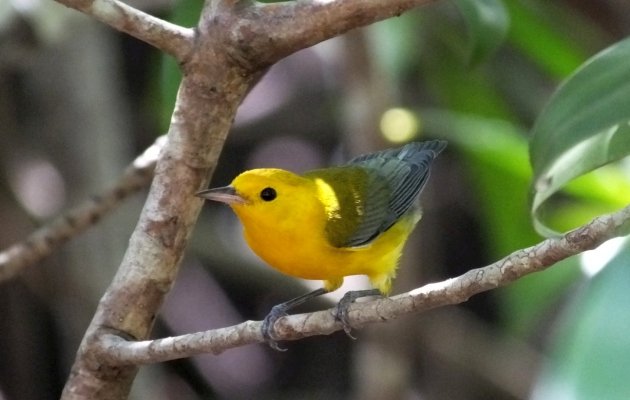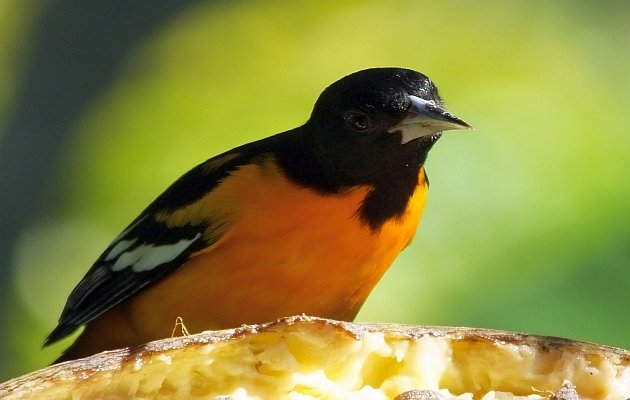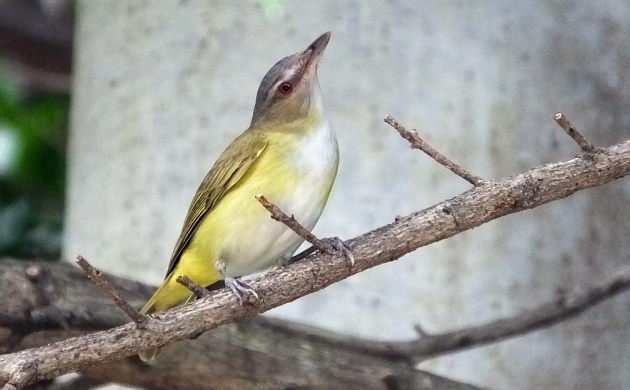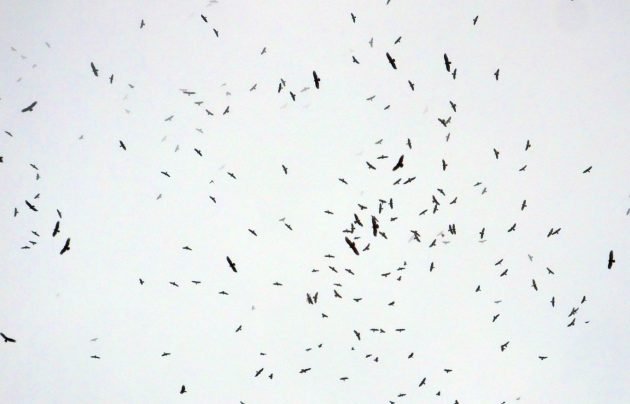
Spring in western New York was and is a time of melting snow, of ice chunks being rushed along the Niagara River, of when you wondered if this year, would it maybe stay warm in April and not snow again? You just knew it wouldn’t but you still wished it somehow would manage to get warm and stay that way. However, as expected, even when it got pretty warm in the latter days of March and hawks migrated along the southern shore of Lake Ontario, at some point in April, it always did snow again. It was one last rebuttal from winter before finally being pushed back to the north by the growing winds of summer.
That unwanted yet predictable final bit of killing cold weather was and is why most of the colorful insectivores, the true birds of summer, remained far to the south until May. The Red-shouldered Hawks, the quick flapping Accipiters and the legions of blackbirds and ducks moved through the cool airs of March and April but the orioles, grosbeaks, and wood-warblers wouldn’t show up until the trees had their buds and many had their leaves.

Based on birding this very morning from the back of my place in Costa Rica, I can guarantee that at least some Baltimore Orioles, Tennessee Warblers, a Painted Bunting and a few other migrants are still far to the south. Based on recent birding, it seems like most of “our” winter birds are still around but the times, they are a changing. Spring is happening in Costa Rica, these are some of the signs:
A Change of Wood-Warblers
Earlier this month, I had a Prothonotary Warbler in the middle of rainforest. Typically, in Costa Rica, this swamp beauty is a bird of wetlands and mangroves. During migration, they occur in more places, I bet that golden-hooded bird with a rainforest mixed flock was on its way to Virginia or Alabama or wooded swamp in some other part of its ancient range that used to bear witness to the double knocks of Ivory-billeds.

I think most Prothonotaries have also left because the other day, in a choice mangrove site that can host a dozen, I only heard one respond to pishing. Other warblers such as Chestnut-sided and Black-throated Green are still around but based on their breeding plumage, they will be quick to leave for the north any day now.
More Birds are Singing
Spring in Costa Rica is more of a transfer from dry to wet than from cold to hot. The birds are queued in to this change and show it by building nests and doing a lot more singing. Now is when the Clay-colored Thrushes really kick their vocal chords into gear, Yellow-green Vireos are singing most of the time, and Piratic Flycatchers call for hours from the treetops.

The Hawks are Flying
That would be migrant raptors such as Broad-winged and Swainson’s Hawks. Scanning from the back balcony this morning, I was pleased to see a dozen Swainson’s taking to the air on distant thermals. Where will they go? All the way to Alaska maybe? A heck of a lot more will be moving through, I hope to witness some of that river raptor action over the next two weeks.

Wilson’s Plovers are in Breeding Plumage
Costa Rica is an important place for wintering Wilson’s Plovers. At some sites, flocks of 30, even 60 or more birds are expected. The other day, several were at the salt pans of Punta Morales and most had a bit of russet or chestnut on their head, dressed to fly back to the shores of the Gulf and raise a brood or two.
During recent birding, other signs of spring from Costa Rica have included my first of many spring Red-eyed Vireos and reports of the first Eastern Kingbirds and Chimney Swifts. These and other birds are on their way north, soon, there will be thousands passing through Costa Rica. Not long after, they will be flying to breeding grounds in West Virginia, Quebec, and Vermont to become birds of summer.











Leave a Comment